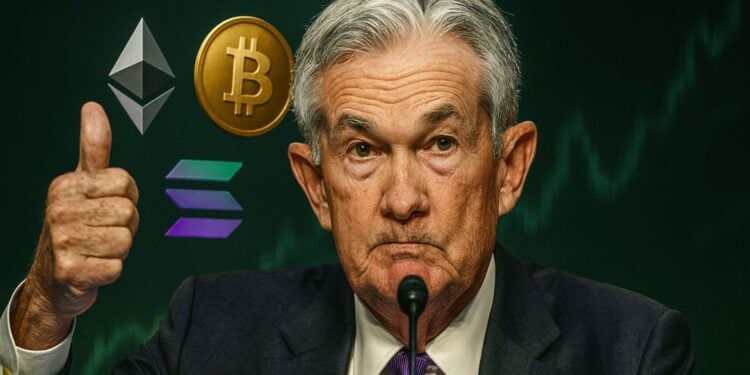- August could deliver a historic wave of bullish catalysts—possible ETF approvals for Solana, XRP, and Avalanche, Ethereum’s next major upgrade, and a potential U.S. Federal Reserve pivot toward rate cuts.
- Pro-crypto regulation is gaining momentum globally, with the U.S., Japan, Singapore, and the Philippines all making moves that invite large-scale institutional adoption.
- A U.S. Bitcoin Strategic Reserve, if implemented, could trigger a global rush for BTC, marking a pivotal shift toward crypto integration into national financial systems.
Something big is brewing in the crypto markets. August is shaping up to be one of the most pivotal months in recent history—and yet, most investors are still half asleep on what’s coming. Between long-awaited ETF decisions, game-changing government policy shifts, and major blockchain upgrades, the stage is set for a month that could define the rest of the bull cycle… and maybe even the next decade of digital assets.
And at the center of this storm? The looming possibility of the United States creating a Bitcoin Strategic Reserve—a move that could ignite a global rush to secure the world’s leading digital asset. But that’s just one piece of the puzzle. From potential ETF approvals for Solana (SOL), XRP, and Avalanche (AVAX)… to Ethereum’s next major upgrades, a possible Federal Reserve pivot, and an unexpected policy shift in Asia—the market is staring down a perfect alignment of bullish catalysts.
The ETF Tsunami: SOL, XRP, and AVAX in the Spotlight
We’ve already seen what happens when the SEC finally caves to market pressure and approves crypto ETFs—Bitcoin and Ethereum products triggered billions in inflows earlier this year. Now, the next wave could be even bigger.
Right now, all eyes are on Solana. Prediction markets like Polymarket are pricing in nearly a 70% chance of a SOL ETF approval this month. If it happens, it won’t just send Solana higher—it will signal to the market that the SEC is ready to expand ETF access to other top-tier altcoins.
XRP and AVAX are next in line for speculation. XRP is already positioning itself as the backbone of future cross-border payments, with banking partnerships and regulatory clarity moving in its favor. Avalanche, meanwhile, is becoming a go-to blockchain for AI and gaming projects, powered by its unique subnet technology and backed by major corporate partnerships.
ETF approval for any of these assets means legitimacy. It opens the door for Wall Street to invest without the friction of wallets, exchanges, or custody concerns. Remember what happened to Ethereum after its ETF launch? Over $15 billion in inflows almost overnight. If that energy shifts to Solana, XRP, or AVAX, we could see the market ignite in a way we haven’t experienced since the early days of the last bull run.
Ethereum’s Roadmap: Quiet Moves, Massive Implications
While everyone watches the ETF drama, Ethereum has been quietly laying the groundwork for its next growth phase.
The Dencun upgrade in March 2024—featuring EIP-4844 (Proto-Danksharding)—was a game-changer, slashing Layer 2 data costs by as much as 100× and reducing gas fees on smaller chains by more than 85%. But the next major milestone is already in motion: the Pectra upgrade, combining Prague and Electra in mid-2025.
Pectra is set to:
- Raise the validator cap from 32 to 2,048 ETH, making staking more efficient for larger holders.
- Increase blob throughput for faster, cheaper rollups.
- Streamline onboarding for institutional Layer 2 adoption.
And that’s just the start. The newly announced Lean Ethereum Plan lays out a decade-long vision—10,000 transactions per second at the base layer, 1 million TPS on Layer 2, zk-based VMs, quantum-resistant cryptography, and SNARK-friendly code.
Institutional signals are already clear: over $10 billion in ETH has been accumulated by large-scale entities in recent months. Developer activity is spiking, tokenization projects are gaining traction, and on-chain volume is climbing—despite ETH’s price still hanging under $3,500. Many analysts believe that when these upgrades are fully realized, Ethereum won’t just recover—it could dominate the next stage of Web3 adoption.
Macro Moves: Fed Pivot, Global Regulation, and Institutional Entry
The macro picture is just as important—and August could deliver some seismic shifts.
In the United States, economists now see a high probability of a Federal Reserve pivot as soon as September. After years of holding interest rates at restrictive levels, the Fed could be signaling rate cuts before the end of the year. For risk assets like crypto, that’s fuel on the fire—liquidity returns, and with it, a wave of speculative and institutional capital.
Globally, the regulatory tide is turning.
- Japan has introduced clear, favorable rules for exchanges.
- Singapore is fast-tracking stablecoin licensing.
- The Philippines just legalized crypto custody for banks.
In the U.S., the passing of the Clarity Act, Genius Act, and Anti-CBDC Act has created the most transparent legal framework for crypto in American history. For institutions that have been waiting for regulatory certainty, these laws are an open invitation.
And then there’s Bitcoin’s potential new role—as a strategic reserve asset. Several governments are now openly discussing the idea of holding BTC in their national treasuries. If even one major economy takes the leap, it could trigger a domino effect unlike anything crypto has seen before.
Why August Might Be the Ignition Point
Put it all together—ETF decisions, Ethereum’s upgrades, a likely Fed policy shift, pro-crypto legislation, and the prospect of Bitcoin becoming a reserve asset—and you’ve got one of the most bullish macro and micro setups in years.
The irony? Most retail investors aren’t paying attention. Fear still lingers from previous market crashes, headlines remain skeptical, and much of the capital is sitting on the sidelines. But in crypto, the biggest gains often come to those who move before the crowd.
This isn’t just about a short-term pump. It’s about the structural integration of crypto into the global financial system—something that could make this month a turning point for the entire industry.
So if August delivers even half of what’s on the table, the charts could look very different by the time September rolls around.














